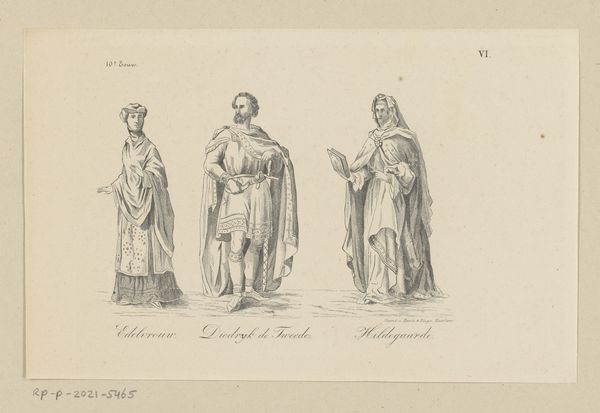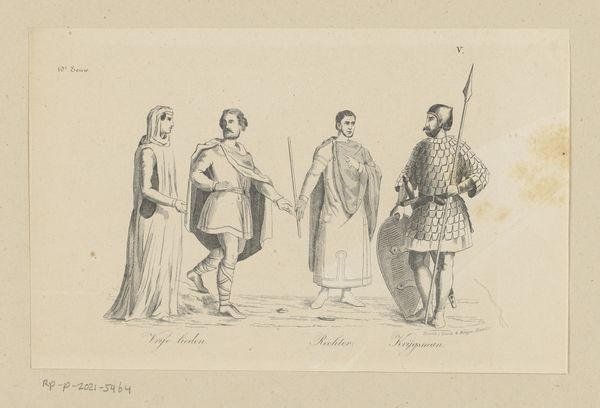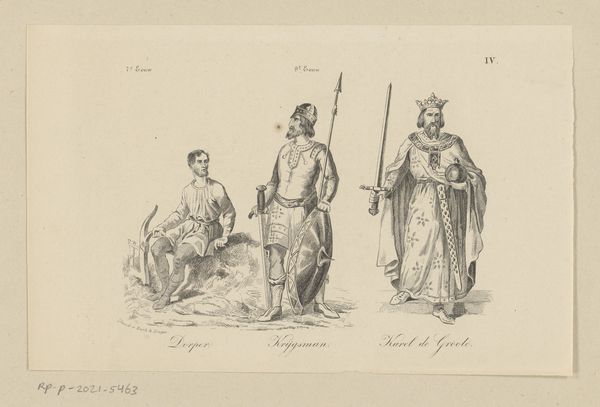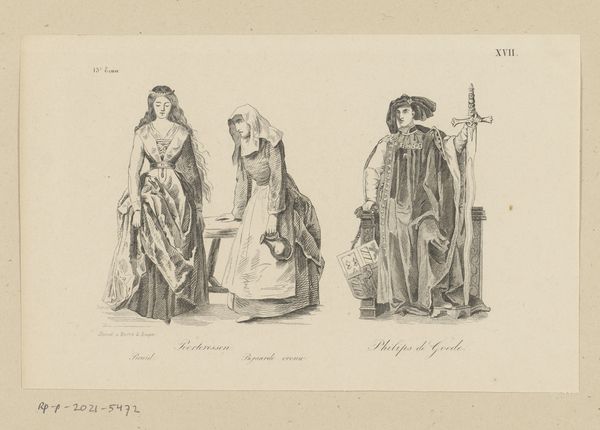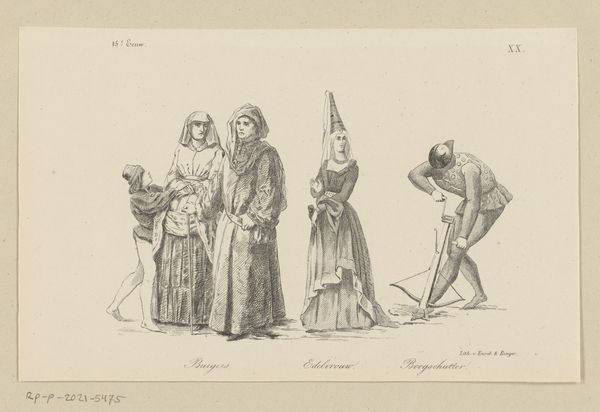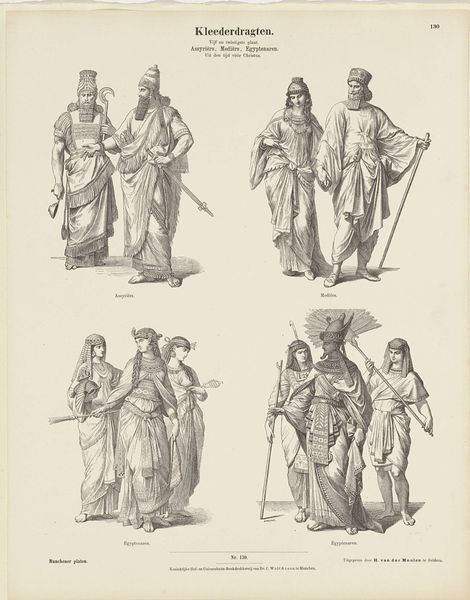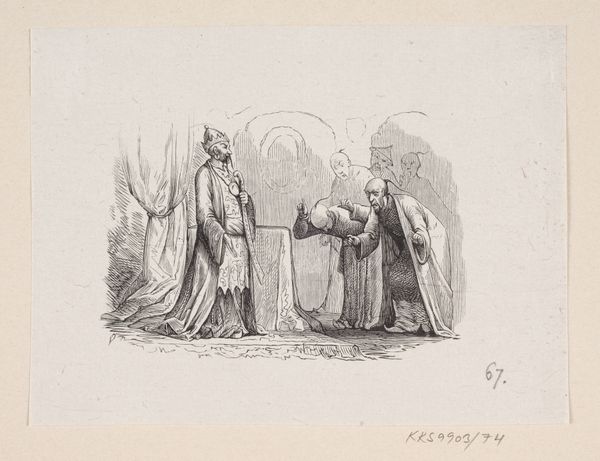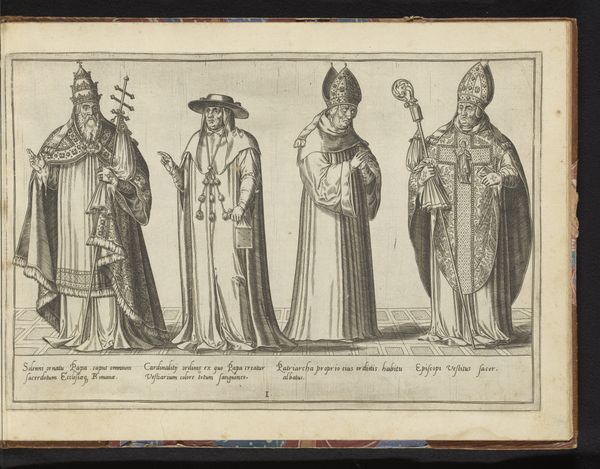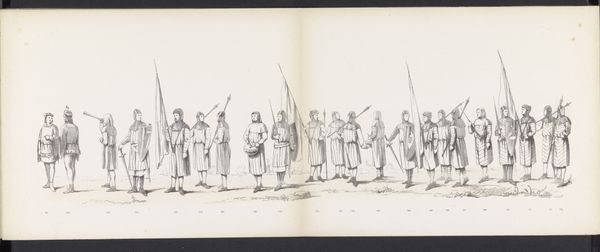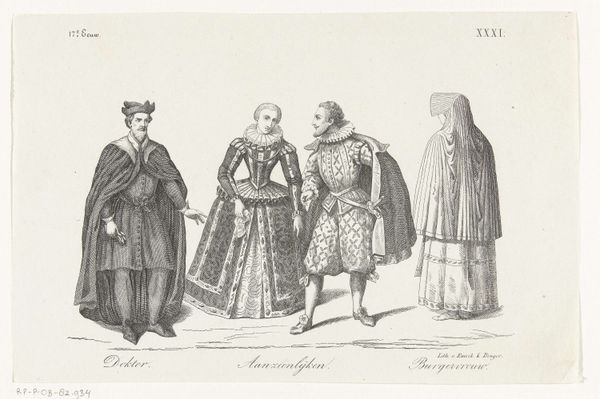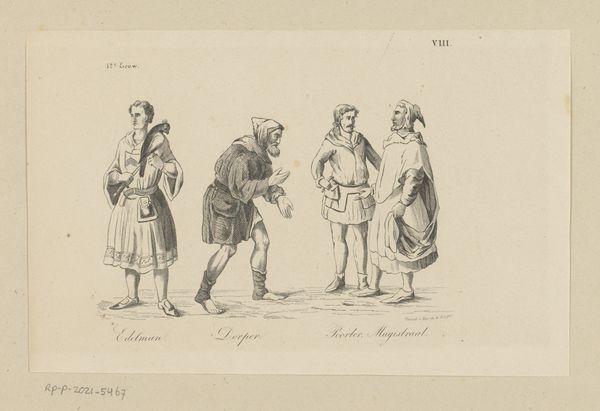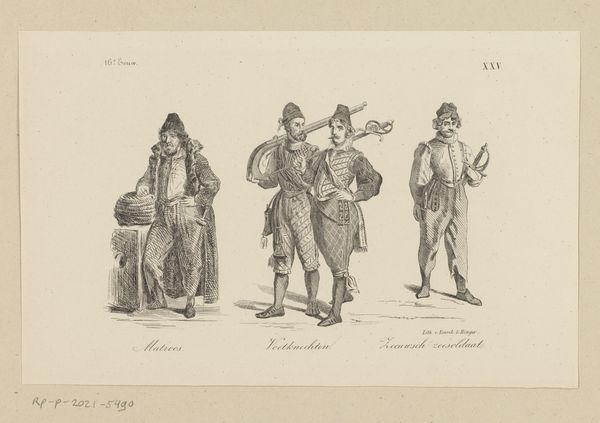
Koopman, krijgsman, Clovis I en Clothilde in kleding uit de derde en vijfde eeuw 1857
0:00
0:00
drawing, ink
#
portrait
#
drawing
#
neoclacissism
#
medieval
#
ink
#
costume
#
sketchbook drawing
#
history-painting
#
academic-art
Dimensions: height 150 mm, width 236 mm
Copyright: Rijks Museum: Open Domain
Curator: Here we have a drawing from 1857, whose title translates to "Koopman, warrior, Clovis I and Clothilde in clothing from the third and fifth century." Editor: Wow, that's quite a mouthful. My first impression is that it looks incredibly studied and a little stiff. It almost feels like a playbill from some serious historical drama. Curator: Indeed. Its neoclassical style presents figures rigidly posed, each figure rendered in meticulous detail using ink on paper. The drawing belongs to a tradition of academic art. Editor: The figures, each labelled beneath, stand in chronological order and are presented almost like costume studies, separated by faint vertical lines, almost as if presented for our approval. There's a sense of reverence for the past that borders on fetishistic. Curator: The artist meticulously researches and represents clothing styles across two centuries, underscoring a commitment to historical accuracy within the aesthetic constraints of Neoclassicism. The linear precision creates distinct forms but may detract from emotional expression. Editor: But maybe the stiffness adds something. Clovis looks imposing, while Clothilde, in contrast, looks much softer. It is curious how she appears with more adornments than Clovis! It speaks, perhaps, to the differing ways they exercised power in their day. Curator: An intriguing interpretation, especially if we consider her influence on Clovis’s conversion to Christianity. The artist juxtaposes historical representation with an emphasis on surface textures through delicate hatching techniques, enhancing the materiality of the garments. Editor: Overall, I'm left with the impression that the artist wanted to document the past precisely and did not set out to inspire. It's a fascinating exercise in rendering the past visible. Curator: Agreed. It reveals as much about 19th-century historical interpretation as it does about the clothing of figures from the early centuries of European history.
Comments
No comments
Be the first to comment and join the conversation on the ultimate creative platform.
